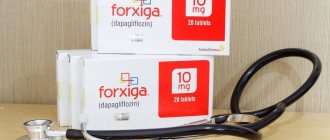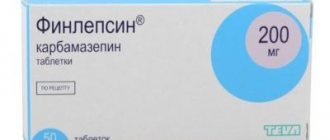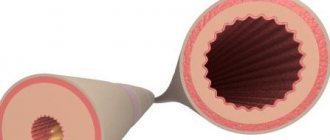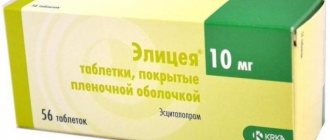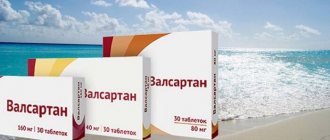What is "Sumamed" from? Let's take a closer look at this issue. The drug is a drug that belongs to a group of antibiotics called azalides and macrolides. It effectively fights a large number of pathogens. It inhibits the functioning of certain cells in their composition, which are responsible for the production of proteins, and therefore the drug is distinguished by bactericidal activity.
So, let’s look at what the medicine “Sumamed” is for.
Compound
In this antibiotic, the active component is azithromycin in a dosage of 125 or 500 mg.
The excipients in the drug "Sumamed" are:
- anhydrous calcium hydrogen phosphate;
- pregelatinized and corn starch;
- hypromellose;
- sodium lauryl sulfate;
- magnesium stearate;
- microcrystalline cellulose.
The composition of the tablet shell is formed by the following components:
- polysorbate 80;
- hypromellose;
- titanium dioxide;
- indigo carmine dye;
- talc.
The drug is placed in blisters of three and six pieces.
But before we tell you what Sumamed tablets help with, we need to mention that the drug also has a second dosage form in the form of gelatin capsules No. 1, placed in a blue case with a blue lid. Inside there is either a white powder or a light yellow dense mass that disintegrates quite easily when pressed.
The active substance is azithromycin at a dosage of 250 mg. The auxiliary components are as follows:
- indigo carmine;
- microcrystalline cellulose;
- gelatin;
- sodium lauryl sulfate;
- titanium dioxide;
- magnesium stearate.
The medicine is packaged in blisters containing six capsules. Dispensed by prescription. Shelf life is three years.
Another dosage form is a suspension (syrup), sold in 100 ml bottles.
Read more about what Sumamed helps with
The drug is used for pathologies of an infectious-inflammatory nature, including:
- infectious diseases of the respiratory tract;
- infections of soft tissues and skin (dermatoses, secondarily infected, impetigo, erysipelas);
- infectious defects of the genitourinary system, cervicitis, urethritis;
- damage to the ENT organs.
Speaking about what Sumamed helps with, it should be said that it is also used at the initial stage of Lyme disease and for erythema migrans.
The active substance of Sumamed and its effect on suppressing bacteria
The active substance of Sumamed and its effect on suppressing bacteria
The main active ingredient of the drug Sumamed is azithromycin. A significant number of harmful bacteria that cause various human diseases are sensitive to this substance. Azithromycin has a detrimental effect on pneumococci (Streptococcus pneumoniae), streptococci agalactiae, pyogenes, viridans, as well as streptococci of groups G and CF. The use of Sumamed is also harmful for Staphylococcus aureus - Staphylococcus aureus.
In addition to the above-mentioned harmful bacteria, azithromycin is able to successfully suppress the vital activity of a mass of gram-negative bacteria: Haemophilus influenzae (Haemophilus influenzae), Moraxella catarrhalis (a common causative agent of mucous infections in children, as well as exacerbations of bronchitis in adults), whooping cough bacteria (Bordetella pertussis and parapertussis), the causative agent of legionellosis Legionella pneumophila, the bacterium H. Ducrei (causes the development of the venereal disease chancroid), the bacterium Campylobacter jejuni (causes the development of campylobacteriosis), the gonococcus Neisseria gonorrhoeae and Gardnerella vaginalis (provokes the disease gardnerellosis).
The active substance of Sumamed and its effect on suppressing bacteria
Sumamed also suppresses the reproduction of some anaerobic bacteria. Among them are the following: Bacteroidesbivius (causes the development of inflammatory diseases of the pelvic organs), Clostridium perfringens (provokes food intoxication in humans, as well as gas gangrene), peptostreptococci Peptostreptococcus spp (in connection with other microorganisms, they contribute to the occurrence of mixed infections in humans), Chlamydia trachomatis (cause infection with chlamydia), Mycoplasma pneumoniae (responsible for diseases of the respiratory system, lung and throat diseases), Ureaplasma urealyticum (causes ureaplasmosis), Treponema pallidum (cause of syphilis), Borrelia burgdoferi (provokes the development of Lyme disease).
It is worth remembering that Sumamed and its active ingredient azithromycin are inactive against gram-positive bacteria sensitive to erythromycin.
Instructions and dosage features
The capsules must be swallowed whole without chewing. Take once a day, depending on the manifestation of signs of infection. The specialist can prescribe both 250 and 500 mg of the drug. It depends on what “Sumamed” was prescribed.
In tablets, the medication is used one to three times a day; they cannot be chewed. The dosage of the drug for respiratory pathologies and damage to the ENT organs, as well as the skin, is 500 mg per day once for 3 days.
"Sumamed" for sore throat: the most effective methods of administration
Doctors and manufacturers recommend using Sumamed if you have a sore throat on an empty stomach before meals. Thus, the drug will penetrate faster to the foci of the disease and begin to act much faster. If for some reason it is impossible to take an antibiotic before eating, you should do so two hours after eating.
It often happens that the patient’s condition improves significantly, and he forgets about taking the drug, skipping the next dose. However, you need to remember that even with apparent relief, you should not stop taking the drug, since the pathogenic microflora is still present in the body, and if treatment is stopped, it can resume its effect with greater force.
Regardless of what “Sumamed” treats in each specific case, it is recommended to drink this antibiotic at the same time, because its action will thus be accelerated.
The dosage of the drug for the treatment of angina is 500 mg per day (taken once). The standard course for uncomplicated diseases is three to five days. The brevity of the administration is due to its ability to accumulate in the human body and act even after the administration is completed.
Of course, the doctor will prescribe a drug depending on the circumstances and, if necessary, can extend the treatment or prescribe another one (it happens that, due to individual characteristics, the drug does not work for the patient).
We treat the infection, but we get dysbacteriosis. Diarrhea during treatment
One of the most common side effects with most antibiotics is diarrhea.
The severity of diarrhea can vary from mild to very severe, accompanied by dehydration and requiring medical treatment. The condition that we are accustomed to consider as dysbiosis during antibiotic treatment is actually pseudomembranous colitis. Its cause is a change in the composition of the intestinal flora and the growth of opportunistic bacteria. As a rule, antibiotic-associated diarrhea develops as a result of the proliferation of Clostridium Difficile, which produces two quite powerful toxins.
The risk group for the development of colitis includes patients with a history of diarrhea during treatment with any other antibiotics. That is, if treatment with antibacterial drugs has ever been accompanied by diarrhea, then the likelihood of a recurrence of this side effect is quite high.
When pseudomembranous colitis appears, an urgent consultation with a doctor is necessary, who first of all should consider the advisability of further treatment with Sumamed.
In case of severe antibiotic-associated diarrhea, discontinuation of the drug is required. Oddly enough, to combat clostridia, you should select another antibiotic that is active specifically against Clostridium Difficile. In addition, in severe cases, rehydration therapy is required, aimed at restoring the water-salt balance in a dehydrated body.
Separately, I would like to note that if signs of pseudomembranous colitis appear, you should not take antidiarrheal drugs containing Loperamide (for example, Imodium). Medicines in this group promote further growth of pathogenic bacteria. You should not take the antibiotic Levomycetin, beloved by many.
The attending physician must find the ideal solution to this unpleasant phenomenon. And no one else.
Side symptoms
Negative effects are standard for all antibacterial drugs and have a number of manifestations:
- intestinal disorders (constipation and diarrhea);
- flatulence;
- nausea.
In rare cases, headaches may occur, as well as dizziness and drowsiness. Sleep disturbance may not be too severe. These phenomena usually go away on their own after the antibiotic is stopped.
Pathologies of the intestinal microflora after treatment of angina with Sumamed may not occur in all cases, since its dosage is small, as well as the duration of use (from three to five days). However, for prevention, it is recommended to take medications that contain bifidobacteria (for example, Linex and Bifidumbacterin).
Contraindications
The drug should not be prescribed to patients who cannot tolerate macrolide antibiotics. In addition, liver and kidney failure are contraindications to the use of this antibiotic.
When telling what Sumamed tablets are for, it is necessary to remember that they must be taken with caution by those who are prone to allergies, since the drug can cause hives, itching or skin rashes. If such reactions occur, you must stop taking the medication and inform your doctor about what happened so that he can change the therapeutic course.
Also, one should not forget that, despite all the positive features, this antibiotic is quite strong and can have a serious effect on the patient’s immunity. That is why Sumamed is not always prescribed for angina the first time, so as not to form a habit in the body towards it.
It should also be prescribed very carefully to expectant mothers: this is practiced only when the possible benefit is significantly higher than the serious consequences of the disease, in extreme cases. Young mothers who are breastfeeding should take the drug “Sumamed” with the same caution (which is now known to be the cause of it), since part of the drug along with the milk will in any case penetrate into the child’s body.
Overdose
In accordance with the instructions for Sumamed tablets for adults, when an overdose occurs, patients may experience various unpleasant phenomena in the form of vomiting, diarrhea and short-term deafness. What to do in such a situation? First of all, it is necessary to perform gastric lavage, and then report the incident to the doctor. Before you start taking medication, you should discuss with your doctor a list of medications that are used at a given time. You cannot combine any drugs with Sumamed without first consulting a therapist.
Features of taking children with sore throat
For sore throat, children can also be prescribed the antibiotic Sumamed. However, in this case, a slightly different dosage regimen with a reduced dosage is developed.
The required amount of the drug is calculated depending on the body weight of the small patient: 10 mg per kilogram of weight. The drug can be given to children in a gentle dosage:
- on the first day – 10 mg;
- and in the next four days in an amount halved, that is, 5 mg.
If the child is in an older age category and tolerates the drug well, then the course can be reduced to three days, but in this case the dose on all days will be equal to the original one.
For tonsillitis, children are often prescribed Sumamed (what these tablets are for is no longer a secret), since they are most often quite well tolerated and have a low number of side effects. But until the child reaches six months of age, he will be treated with other drugs. If parents are afraid that they will encounter difficulties when their baby tries to swallow a pill, then a form of use such as a suspension will help them, because the baby will drink the sweetish syrup without disgust and easily.
Video about prescribing antibiotics
In the video, Dr. Komarovsky explains when antibiotics are needed, what type of microbes they act on, and whether antibiotics can be prescribed for preventive purposes.
There is probably not a single person today who has never taken antibiotics. These substances help fight many previously fatal diseases. However, they should still be used very carefully. And ideally, it’s good when the body copes with all diseases on its own. Share what secrets you use to strengthen your immune system, what medications have proven to be the most gentle and effective for you. Good health to you and your children.
How can you help your body overcome a sore throat as quickly as possible?
For angina, Sumamed is one of the most powerful remedies.
But, of course, you shouldn’t limit yourself to using antibiotics. Any doctor, as an additional measure, will also prescribe gargling to completely cleanse the source of infection - the tonsils, so that the disease does not become chronic.
For this, Chlorhexidine or Hexoral can be used. In addition, while taking antibiotics, bed rest is required so that the patient does not waste unnecessary energy. It is not recommended to go outside unless absolutely necessary, because even slight hypothermia can cause a relapse of the pathology.
History of creation
Sumamed was invented by a research group of the Croatian company Pliva. It can be noted that Pliva has been a source of special pride for Croatians for almost 100 years. The company employed outstanding scientists, among whom was the Croatian Nobel Prize winner in chemistry in 1975, Vladimir Prelog.
A group of chemists from Zagreb who managed to synthesize Azithromycin (the active ingredient of Sumamed) also achieved worldwide recognition. In 2000, scientists led by Dr. Slobodan Đokić became the winners of the prestigious American Chemical Society Heroes of Chemistry award for the invention of Azithromycin.
Croatia takes pride of place in the list of nine countries that have synthesized their own original antibiotics. To this day, Azithromycin or Sumamed is the most important pharmaceutical product invented in Croatia. And one of the most important in the world.
>>We recommend: if you are interested in effective methods of getting rid of chronic runny nose, pharyngitis, tonsillitis, bronchitis and persistent colds, then be sure to check out this page of the site after reading this article. The information is based on the author’s personal experience and has helped many people, we hope it will help you too. Now let's return to the article.<<
Cheaper analogues
We found out what Sumamed helps with. Now let's look at analogues of the drug. Below is a detailed list:
- "Ecomed". This product costs 220 rubles, which is quite favorable compared to other drugs. It has a wide spectrum of action and influence, so in case of a bacterial infection, the patient’s condition quickly improves.
- "Hemomycin." The price starts from 300 rubles per package. It provokes a minimum of side effects and affects the body very quickly.
- "Azitrox". With the active ingredient – azithromycin. This remedy is successfully used for children and adults. The cost starts from 315 rubles per package.




